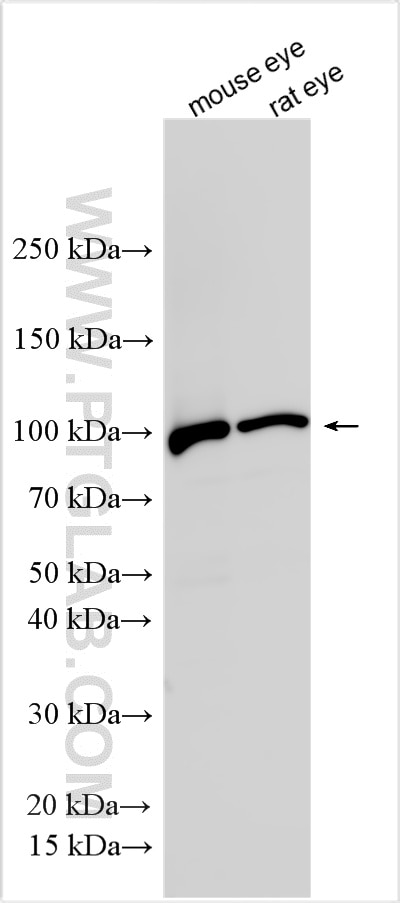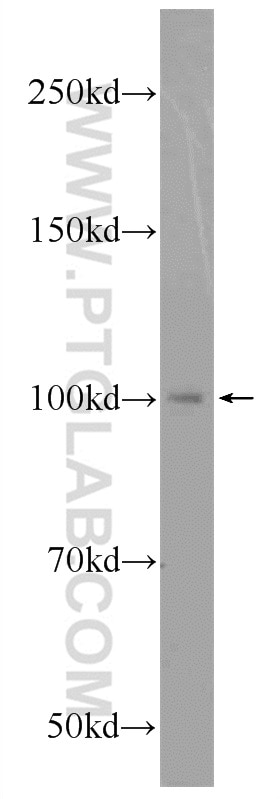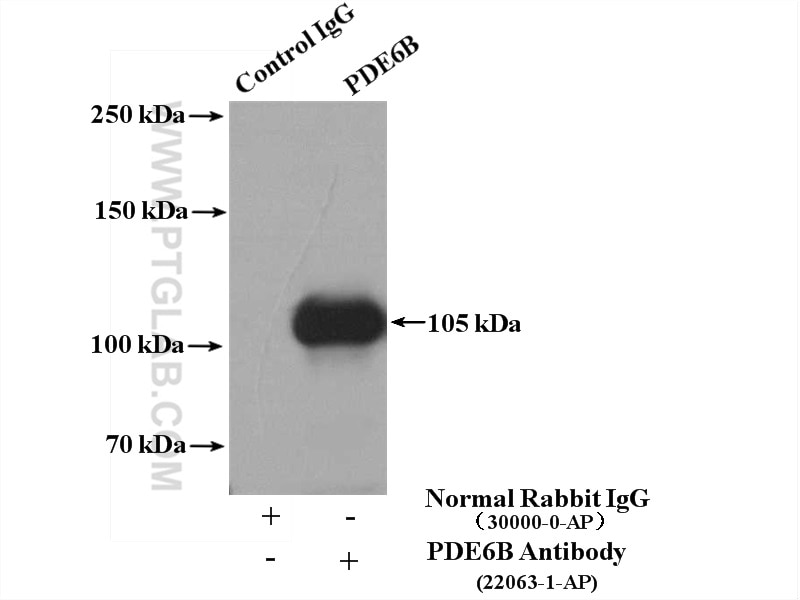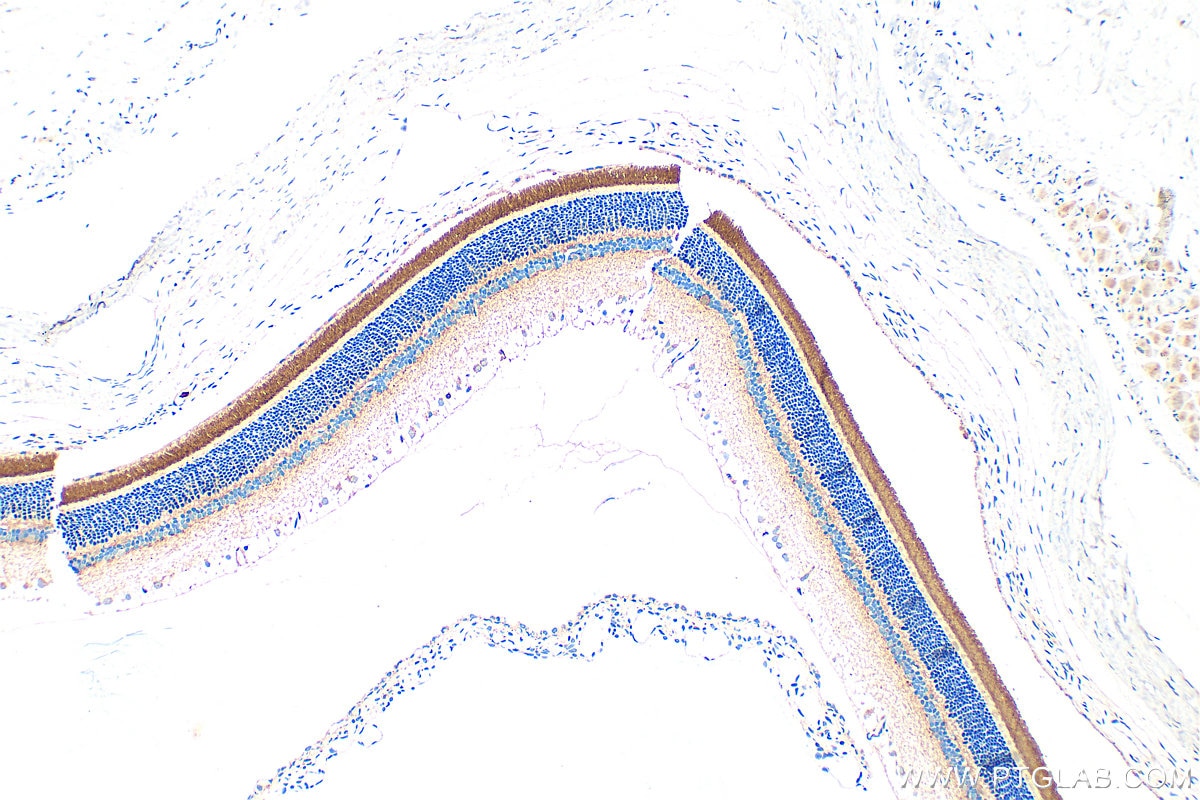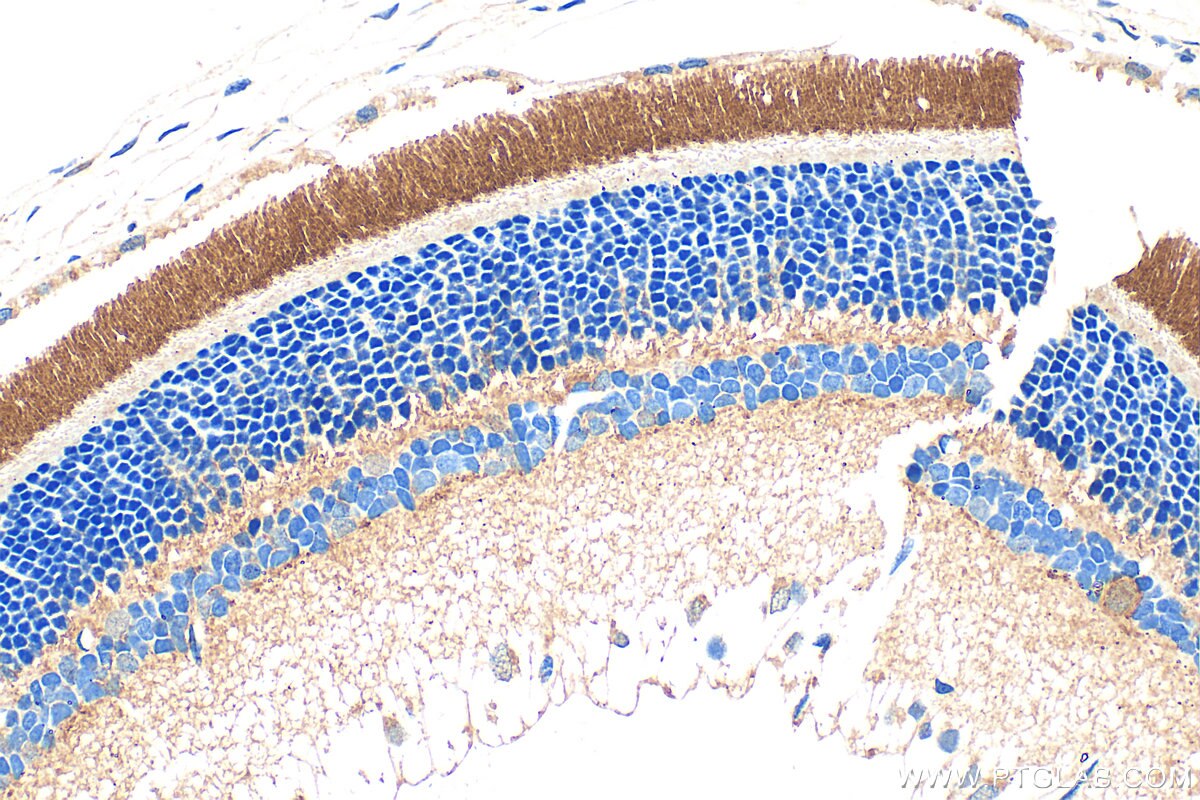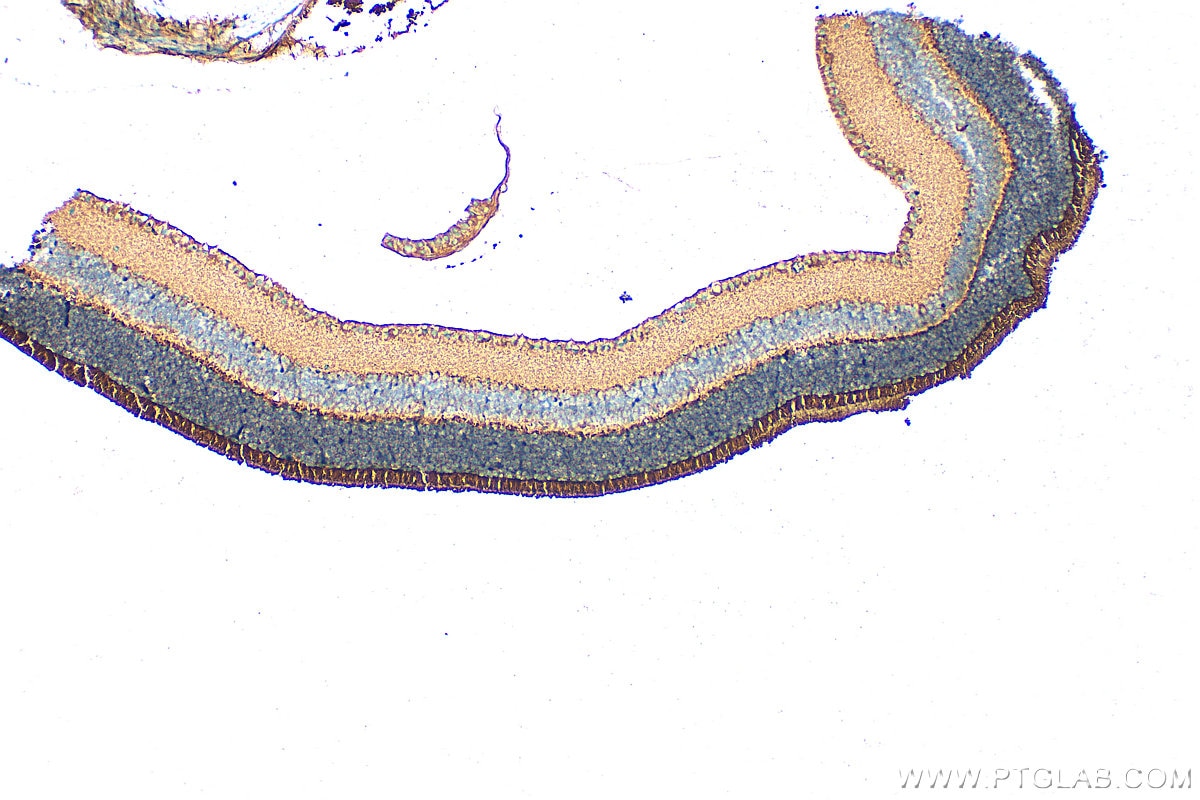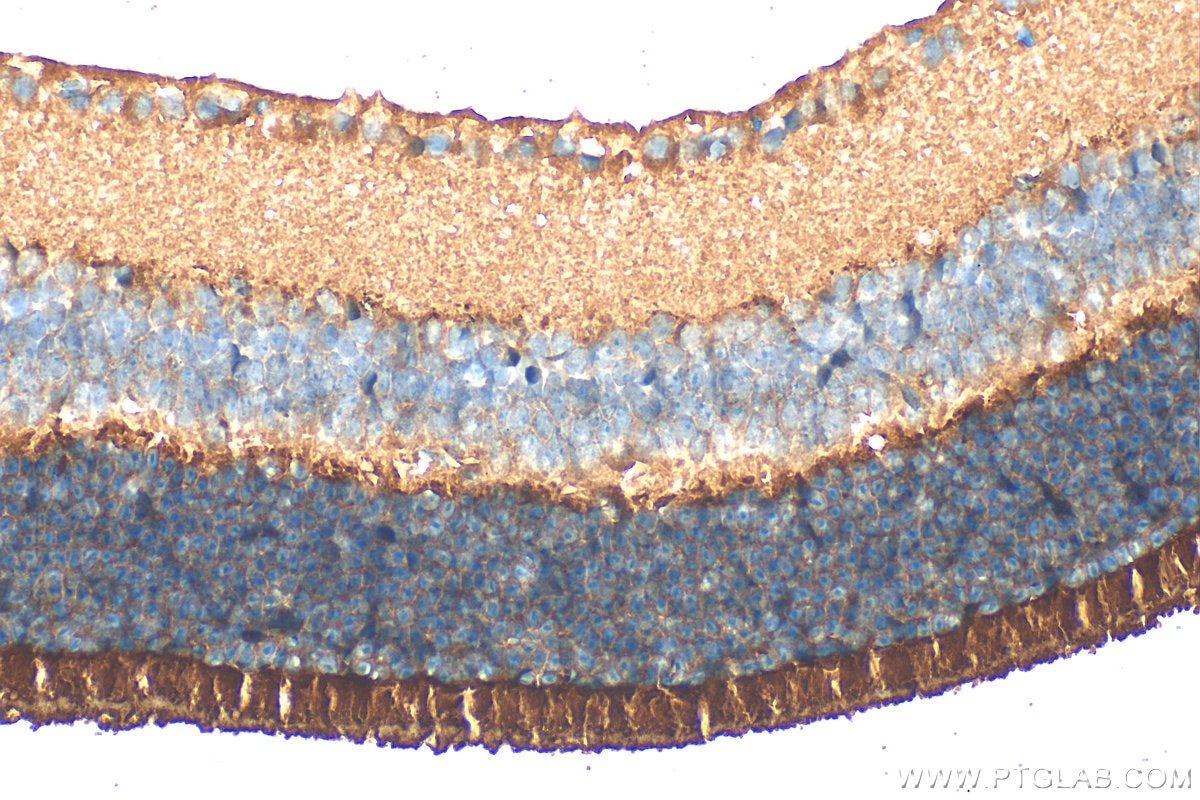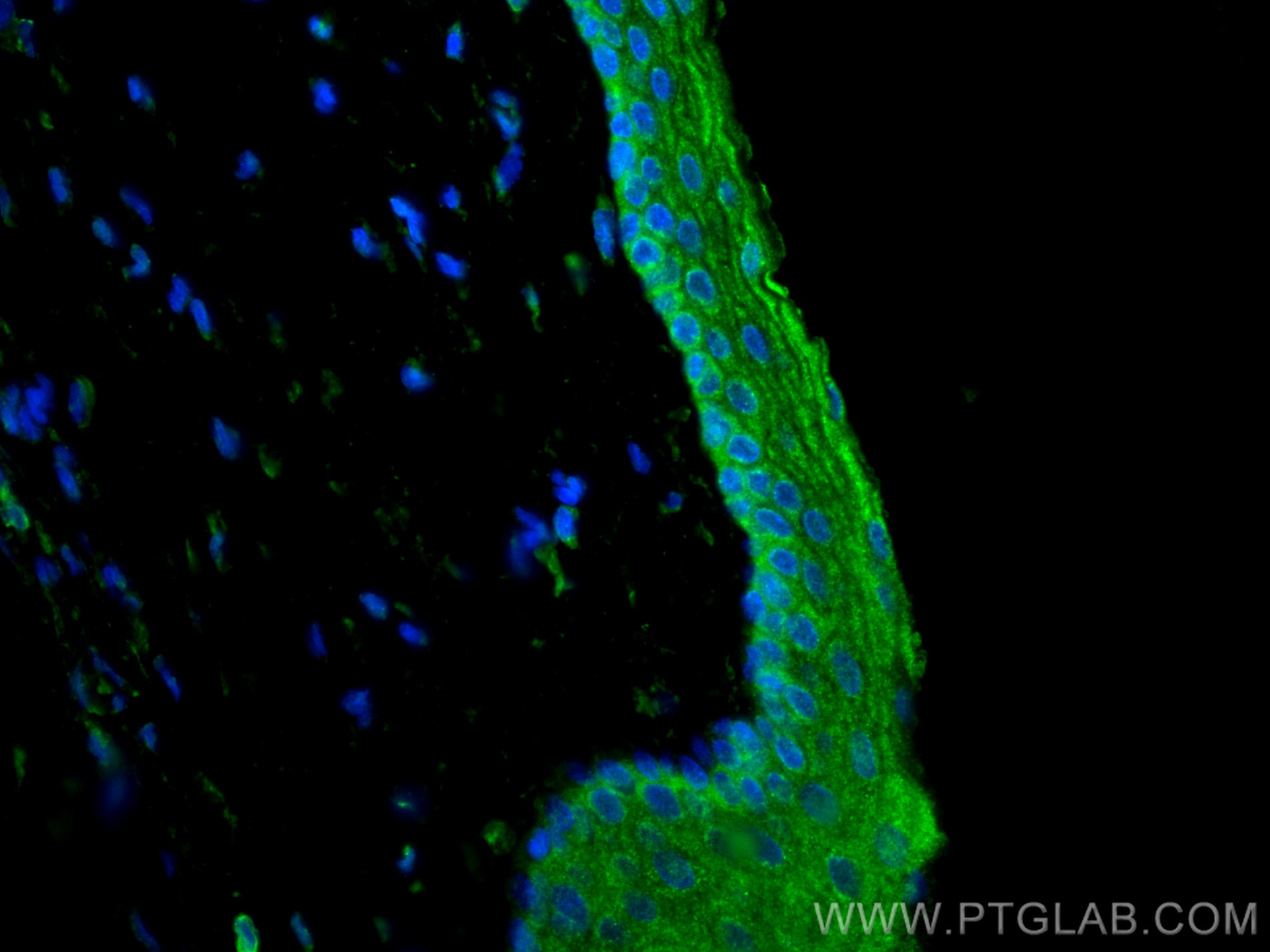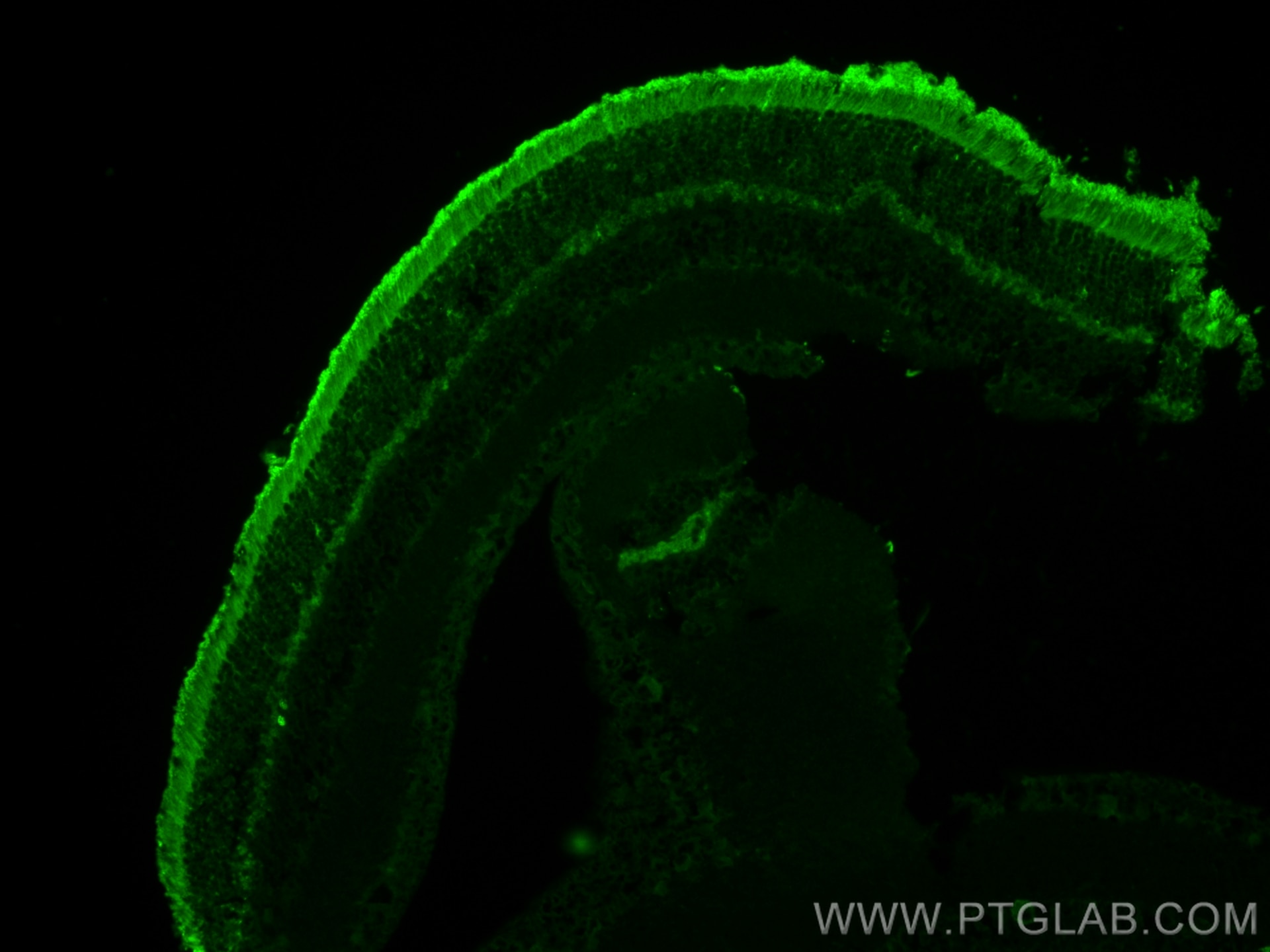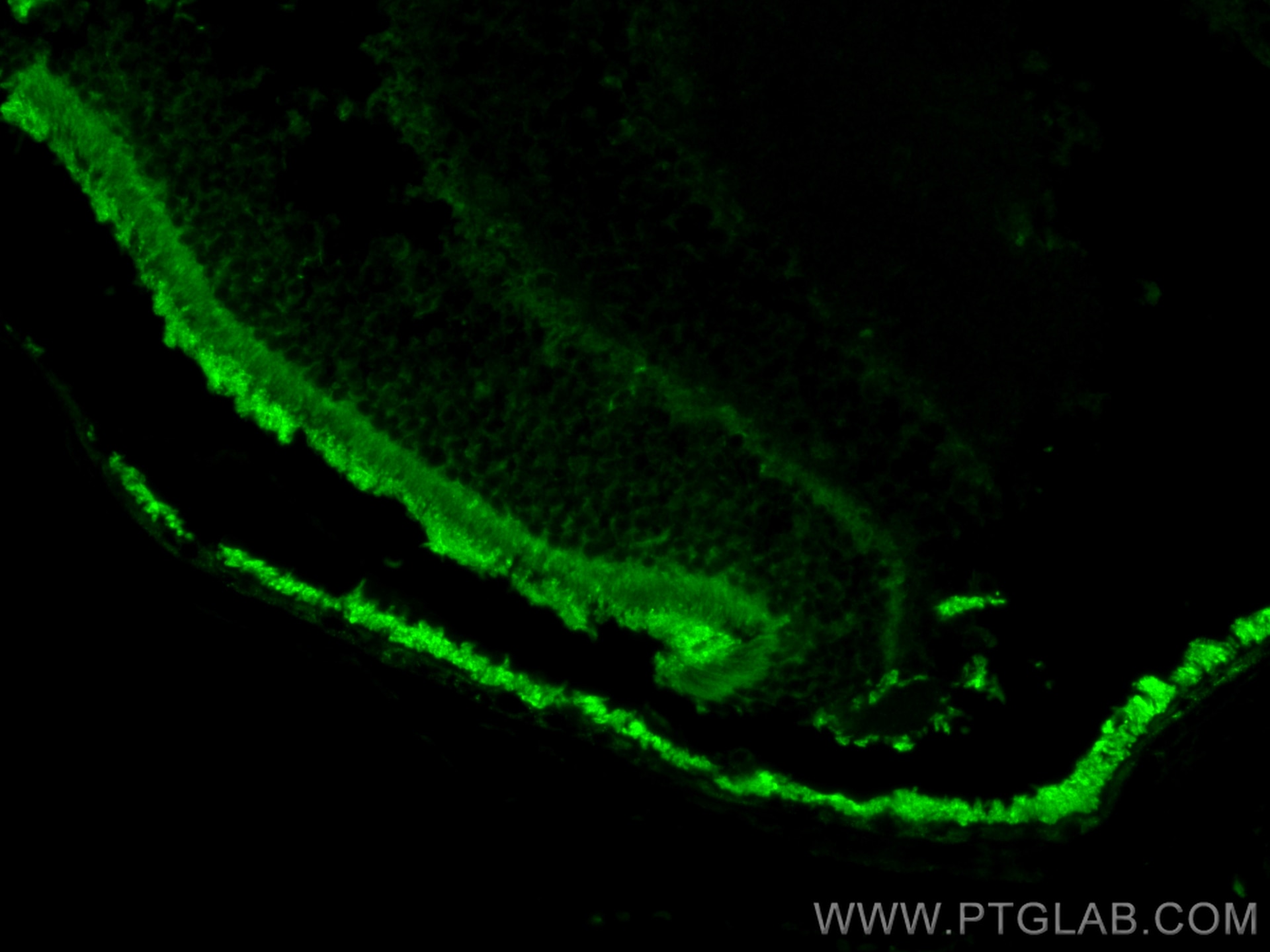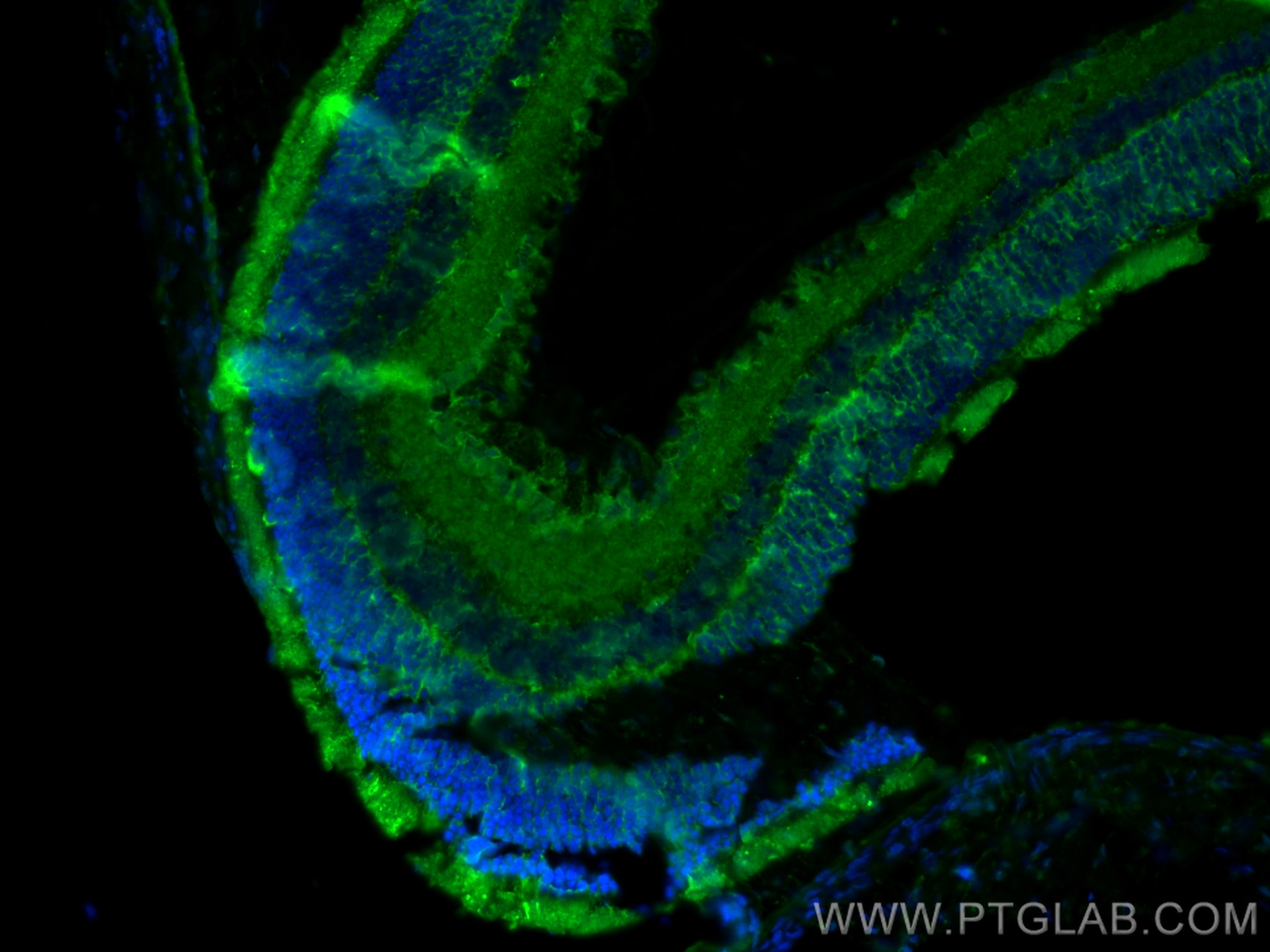PDE6B Polyklonaler Antikörper
PDE6B Polyklonal Antikörper für WB, IHC, IF-P, IP, ELISA
Wirt / Isotyp
Kaninchen / IgG
Getestete Reaktivität
human, Maus, Ratte und mehr (1)
Anwendung
WB, IHC, IF-P, IP, ELISA
Konjugation
Unkonjugiert
Kat-Nr. : 22063-1-AP
Synonyme
Geprüfte Anwendungen
| Erfolgreiche Detektion in WB | Maus-Augengewebe, A549-Zellen, Ratten-Augengewebe |
| Erfolgreiche IP | Y79-Zellen |
| Erfolgreiche Detektion in IHC | Ratten-Augengewebe, Maus-Augengewebe Hinweis: Antigendemaskierung mit TE-Puffer pH 9,0 empfohlen. (*) Wahlweise kann die Antigendemaskierung auch mit Citratpuffer pH 6,0 erfolgen. |
| Erfolgreiche Detektion in IF-P | Ratten-Augengewebe, Maus-Augengewebe |
Empfohlene Verdünnung
| Anwendung | Verdünnung |
|---|---|
| Western Blot (WB) | WB : 1:2000-1:12000 |
| Immunpräzipitation (IP) | IP : 0.5-4.0 ug for 1.0-3.0 mg of total protein lysate |
| Immunhistochemie (IHC) | IHC : 1:300-1:1200 |
| Immunfluoreszenz (IF)-P | IF-P : 1:50-1:500 |
| It is recommended that this reagent should be titrated in each testing system to obtain optimal results. | |
| Sample-dependent, check data in validation data gallery | |
Veröffentlichte Anwendungen
| WB | See 8 publications below |
| IHC | See 2 publications below |
| IF | See 4 publications below |
Produktinformation
22063-1-AP bindet in WB, IHC, IF-P, IP, ELISA PDE6B und zeigt Reaktivität mit human, Maus, Ratten
| Getestete Reaktivität | human, Maus, Ratte |
| In Publikationen genannte Reaktivität | human, Maus, Zebrafisch |
| Wirt / Isotyp | Kaninchen / IgG |
| Klonalität | Polyklonal |
| Typ | Antikörper |
| Immunogen | PDE6B fusion protein Ag17139 |
| Vollständiger Name | phosphodiesterase 6B, cGMP-specific, rod, beta |
| Berechnetes Molekulargewicht | 854 aa, 98 kDa |
| Beobachtetes Molekulargewicht | 98 kDa |
| GenBank-Zugangsnummer | BC000249 |
| Gene symbol | PDE6B |
| Gene ID (NCBI) | 5158 |
| Konjugation | Unkonjugiert |
| Form | Liquid |
| Reinigungsmethode | Antigen-Affinitätsreinigung |
| Lagerungspuffer | PBS with 0.02% sodium azide and 50% glycerol |
| Lagerungsbedingungen | Bei -20°C lagern. Nach dem Versand ein Jahr lang stabil Aliquotieren ist bei -20oC Lagerung nicht notwendig. 20ul Größen enthalten 0,1% BSA. |
Hintergrundinformationen
PDE6 is a cGMP-specific PDE family and presents multicomponent enzyme complexes. The rod PDE6 enzyme is comprised of two catalytic subunits (PDE6A and PDE6B) and it is expressed in human lungs (PMID:20979602). PDE6B(Rod cGMP-specific 3',5'-cyclic phosphodiesterase subunit beta) is also named as PDEB and belongs to the cyclic nucleotide phosphodiesterase family. PDE6B also has a C-terminal CAAX motif for posttranslational processing involving lipidation, proteolysis, and carboxymethylation (PMID:8394243). Defects in PDE6B are the cause of retinitis pigmentosa type 40 (RP40)(PMID:22334370) and congenital stationary night blindness autosomal dominant type 2 (CSNBAD2) (PMID:8075643).
Protokolle
| PRODUKTSPEZIFISCHE PROTOKOLLE | |
|---|---|
| WB protocol for PDE6B antibody 22063-1-AP | Protokoll herunterladen |
| IHC protocol for PDE6B antibody 22063-1-AP | Protokoll herunterladenl |
| IF protocol for PDE6B antibody 22063-1-AP | Protokoll herunterladen |
| IP protocol for PDE6B antibody 22063-1-AP | Protokoll herunterladen |
| STANDARD-PROTOKOLLE | |
|---|---|
| Klicken Sie hier, um unsere Standardprotokolle anzuzeigen |
Publikationen
| Species | Application | Title |
|---|---|---|
Proc Natl Acad Sci U S A Accumulation of non-outer segment proteins in the outer segment underlies photoreceptor degeneration in Bardet-Biedl syndrome. | ||
J Biol Chem Pathogenic Mutations in Retinitis Pigmentosa 2 Predominantly Result in Loss of RP2 Protein Stability in Human and Zebrafish. | ||
J Biol Chem The myosin-tail homology domain of centrosomal protein 290 is essential for protein confinement between the inner and outer segments in photoreceptors. | ||
Dev Biol Luteinizing hormone signaling phosphorylates and activates the cyclic GMP phosphodiesterase PDE5 in mouse ovarian follicles, contributing an additional component to the hormonally induced decrease in cyclic GMP that reinitiates meiosis. | ||
PLoS One Differential requirement of NPHP1 for compartmentalized protein localization during photoreceptor outer segment development and maintenance. |
